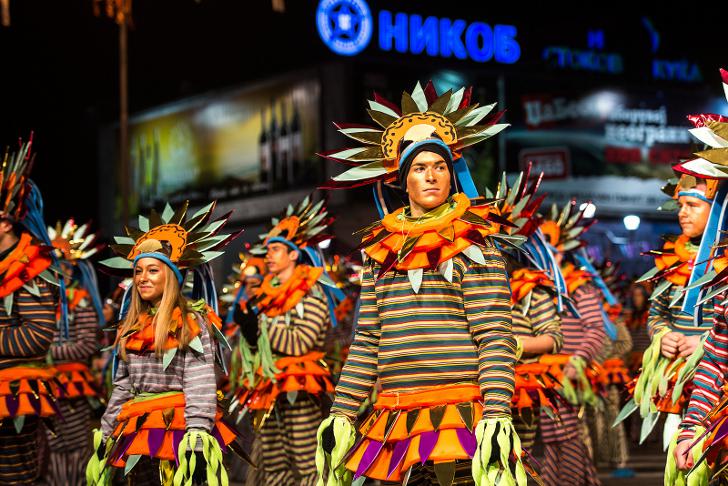The first mention of the Strumica Carnival is dated 1670. It can be found in the Seyahatname, the travelogue of the Ottoman traveler and explorer Evliya Çelebi, but the Carnival probably had existed long before that, maybe even since pre-Christian times. For a long time, the celebration was sort of spontaneous. It took its current organized form in 1991, when Macedonia gained independence from Yugoslavia. Three years later, Strumica joined the Federation of European Carnival Cities (FECC).
Like most Carnival celebrations, the Strumica Carnival is held during the pre-Lenten season, known as Trimeri Days in North Macedonia. However, you should keep in mind that North Macedonia is a predominantly Eastern Orthodox Country, and the Macedonian Orthodox Church uses the Julian calendar, so the Strumica Carnival does not coincide with Carnivals in historically Catholic or Protestant countries.
The Orthodox Lent begins on the seventh Monday before Easter Sunday, called Clean Monday, and the Strumica Carnival would traditionally begin on the Saturday before Clean Monday and culminate on the following Tuesday, the second day of the Great Lent. Today, however, the Saturday before Lent with its big parade is considered the main day of the Carnival.
The Strumica Carnival opens with a masquerade ball held on the Friday before Clean Monday, during which the Carnival royalty – the prince and the princess – are elected. The main celebration on Saturday includes a grand procession of revelers in original costumes and masks.
The most common characters of the Strumica Carnival are the bride and groom, the priest, and the devil. Animal masks, most likely inspired by ancient pagan traditions, are also very popular. Masks are very rarely ready-made; most participants choose their characters and make the masks themselves, typically months in advance. Some revelers wear individual masks, while others come in groups and choose masks representing the concept of the whole group. The most original and creative masks are awarded prizes at a ceremony held on the Tuesday after Clean Monday.
In addition to the ball, parade, and mask competition, Carnival events and activities in Strumica include stage performances, exhibitions of drawings and masks made by local children, parties, a children’s parade traditionally held on the Sunday before Clean Monday, and more. The whole town livens up during the Carnival as tourists come to Strumica from all over the country and abroad to see the colorful procession and take part in the festivities.
Even though the Strumica Carnival has become more modern over the past few years, some of the old traditions have been preserved. One of these traditions has earned it the nickname the Brides’ Carnival. It involves groups of masked revelers coming to the homes of betrothed girls, and the girls trying to recognize their fiancés under the masks.

Photo: FOSIM




